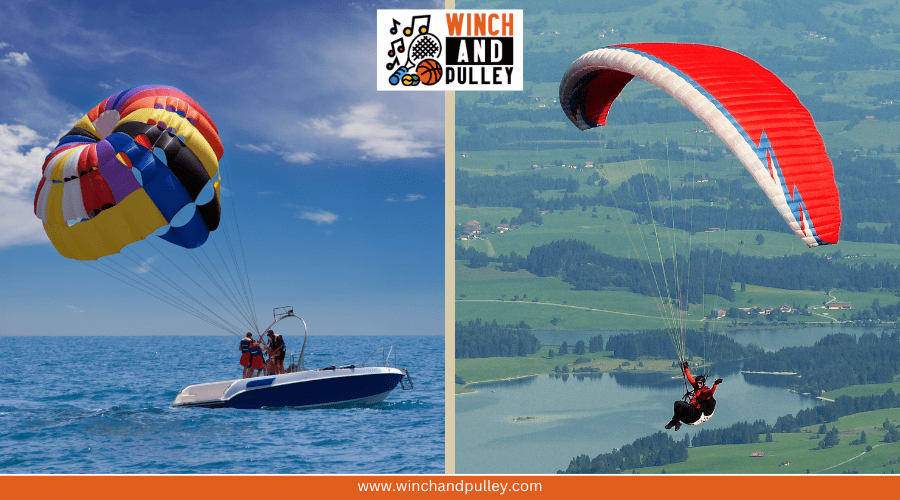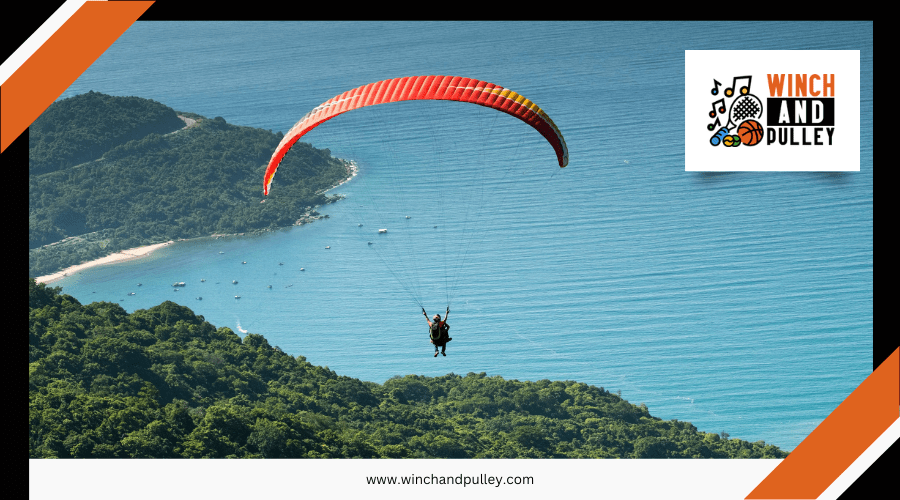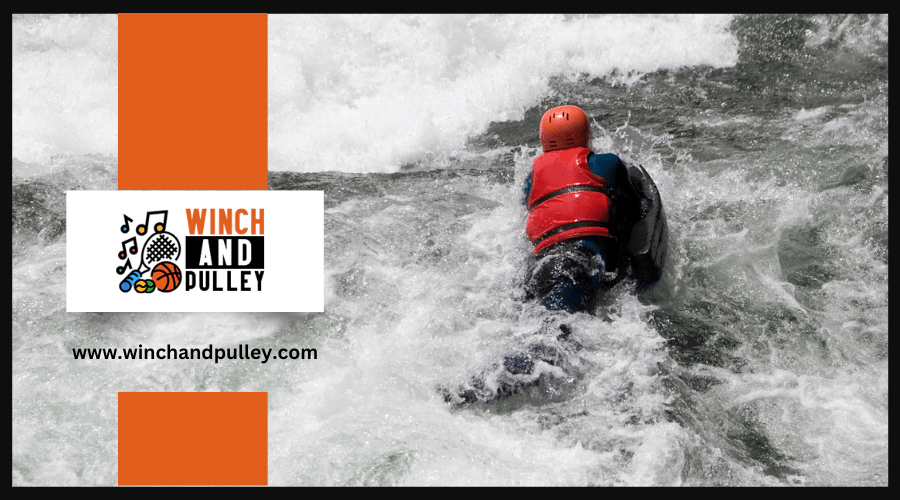Ice Boating: Sailing on Frozen Lakes and Rivers
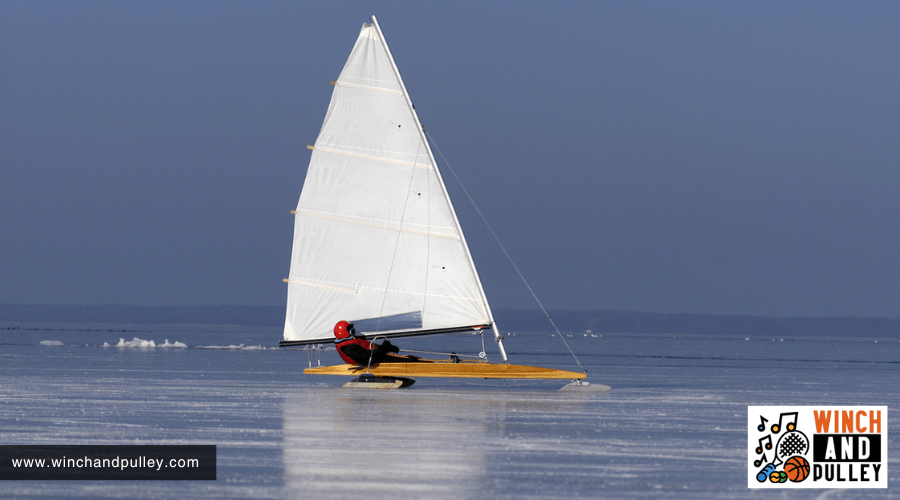
Imagine gliding effortlessly across a frozen lake, the wind propelling you to exhilarating speeds as you navigate a specialized ice boat. Ice boating, originating in 17th century Europe, combines the precision of sailing with the swift grace of ice skating.
What makes this sport so captivating is not just its rich history or the advanced design of the boats, but the unique blend of skill, equipment, and environmental awareness it demands. Achieving those breathtaking speeds on ice requires a deep understanding of both the sport and the natural conditions.
Key Takeaways
- Ice boating originated in Europe in the 1600s and gained popularity in New York by the 18th century.
- Ice boats are designed with lightweight materials and metal runners to maximize speed and stability while minimizing drag.
- Essential safety gear includes helmets, goggles, thermal clothing, and an emergency survival kit.
- Ideal conditions for safe and enjoyable ice boating include thick, robust ice, minimal snowfall, and adequate wind.
- Popular destinations for ice boating include Lake Geneva, Moosehead Lake, Lake Constance, and Green Lake.
History of Ice Boating
Ice boating originated in Europe in the 1600s and reached New York by the 18th century. Imagine sleek yachts gliding effortlessly over frozen rivers and lakes, propelled by the wind. In New York, the Hudson River Ice Yacht Club became a hub for this exhilarating activity. Wealthy enthusiasts commissioned intricately designed ice boats to race across the frozen Hudson River. These ice boats quickly became status symbols among the affluent.
Unlike typical boats, they were built for speed, achieving velocities over 75 mph—remarkably faster than the locomotives of the 19th century. The thrill of speeding across a frozen landscape captivated many, including prominent figures like Franklin D. Roosevelt. For them, ice boating was a spectacle of speed and engineering prowess.
Ice boating wasn't solely for recreation. During certain periods, ice boats served as crucial means of transportation and even saw use in warfare. The rich tradition of ice boating on the Hudson River paints a vivid picture of innovation and excitement, transcending simple leisure.
Ice Boat Design
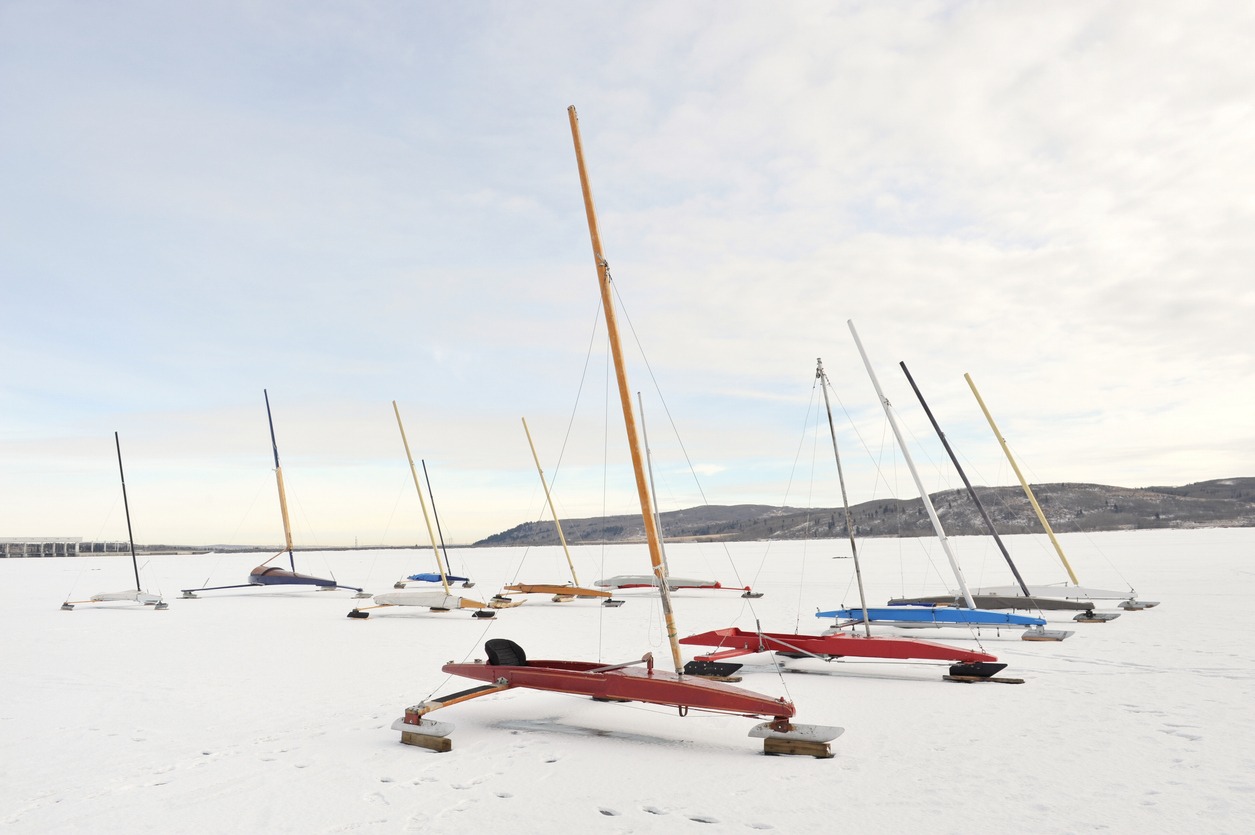
When examining ice boat design, focus on the hull and runner construction, which ensure smooth gliding over frozen surfaces. Additionally, consider the sail and rigging configuration that optimizes wind capture for speed and control. Each design element is engineered to withstand the harsh conditions of frozen lakes and rivers, working in unison to provide a safe and efficient ride.
Hull and Runner Construction
To achieve the speed and agility you crave on frozen lakes, ice boat hulls are constructed from lightweight materials like wood, fiberglass, or carbon fiber. These materials offer a balance of strength and lightness, allowing the boat to glide effortlessly across the ice.
The hull's streamlined design minimizes drag, enhancing performance. Attached to the hull are metal runners, typically made from stainless steel or aluminum. These runners are crucial for stability and steering. They're precisely shaped and meticulously sharpened to reduce friction and achieve maximum speed.
The alignment and balance of each runner directly influence the ice boat's maneuverability. Ice boat designs vary by class, with some featuring single runners and others multiple runners. This variation affects performance characteristics, offering different experiences based on your needs and preferences.
Whether you seek speed or stability, the precise construction and alignment of the hull and runners are essential. By focusing on these elements, you ensure optimal performance, providing an exhilarating and smooth ride on frozen surfaces.
Sail and Rigging Setup
In ice boat design, the sail and rigging setup are crucial for harnessing wind power and achieving optimal speed. Proper positioning of the sail is essential to effectively capture the wind, necessitating adjustments to the rigging to achieve balance. The rigging consists of lines and pulleys that control the sail's angle and tension.
Foot pedals connected to a steering runner provide precise control and maneuverability. Adjusting the sail and rigging setup impacts both speed and handling, particularly in varying ice conditions. Proper adjustments can significantly enhance performance, allowing for smoother navigation and improved stability.
Here's a brief overview of the key components:
| Component | Function | Importance |
|---|---|---|
| Sail | Captures wind for propulsion | Enhances speed |
| Rigging Setup | Adjusts sail angle and tension | Optimizes performance |
| Runners | Provide stability and steering | Essential for control |
| Steering Runner | Controlled by foot pedals for maneuverability | Ensures navigation |
Understanding these elements is vital for mastering ice sailing techniques and achieving peak performance.
Essential Equipment
To ensure a safe and enjoyable ice boating experience, it's essential to have the right equipment. Start with a well-rigged iceboat and reliable sails for optimal speed and control. Additionally, safety gear such as helmets, goggles, and appropriate cold-weather clothing are crucial for protection against the elements.
Ice Boat Types

Ever wondered what types of ice boats are essential for a thrilling ride on a frozen lake? Ice boats come in different classes, each designed to offer a distinct experience. The basics you'll find in any ice boat include a backbone spar, metal runners, and a sail. These elements, combined with wind power, allow these boats to reach incredible speeds.
One popular type is the stern steerer. This class can hold 6-8 adult passengers and is known for its stability. It features three metal runners: two at the rear for stability and one at the front for steering. This design ensures you can navigate icy expanses with confidence.
For a more personal experience, there are smaller, one-person boats. These are nimble and can achieve high speeds, making them perfect for solo adventurers. For those seeking something in between, mid-sized boats can carry a couple of passengers. These boats offer a balanced mix of speed and stability.
Here's a quick rundown of the main types of ice boats:
- Stern steerer
- One-person boats
- Mid-sized boats
Each type has its own unique features, ensuring there's something for everyone.
Safety Gear Necessities
Choosing the right ice boat is crucial for your adventure, but wearing proper safety gear is just as essential. Start with a helmet to protect your head from any unexpected impacts. Ice boating can be fast and thrilling, but the ice is unforgiving, and a helmet can be a lifesaver in case of a fall or collision.
Next, don't forget your goggles. The wind, ice, and debris can be harsh on your eyes. Goggles will shield you from these elements, ensuring you can see clearly and react quickly. This piece of safety gear is vital for maintaining visibility and focus while sailing at high speeds.
Your hands also need protection, so wear gloves to keep them warm and improve your grip. The cold can be intense, and numb fingers can make it difficult to steer and control the boat. Gloves provide the necessary warmth and protection against the biting cold.
Lastly, ice grips are indispensable for maintaining a secure hold on the boat and preventing slips on icy surfaces. With the right safety gear, you'll be well-prepared to enjoy your ice boating experience safely.
Clothing for Conditions
To stay warm and comfortable while ice boating, you need to wear thermal layers, windproof outerwear, waterproof gloves, and insulated boots. These items are essential to protect you from freezing temperatures and harsh winds on frozen lakes and rivers.
Layering is key. Start with thermal layers to retain body heat. These should be breathable and snug. Over your thermals, wear windproof outerwear to shield you from biting gusts. A good windbreaker or windproof jacket and pants are crucial for maintaining your core temperature.
Your hands and feet are particularly vulnerable to the cold, so waterproof gloves and insulated boots are necessary. Waterproof gloves will keep your hands dry and warm, allowing you to maintain dexterity and grip. Insulated boots will protect your feet from the icy surface and keep them warm and dry.
Here's a quick checklist:
- Thermal layers: Base layers for warmth
- Windproof outerwear: Jacket and pants to block wind
- Waterproof gloves: Keep hands dry and warm
- Insulated boots: Essential for foot warmth and protection
Weather Considerations
Understanding the weather is crucial for a safe and enjoyable ice boating experience. Ice yachting is highly weather-dependent, requiring a solid understanding of meteorological conditions before you set out. The success of your ice yachting adventure depends on finding the right ice conditions, meaning both the depth and stability of the ice must be evaluated. It's not enough for the surface to be frozen; it must be robust enough to support your weight and your ice boat.
Ideal ice yachting conditions typically involve minimal snowfall, as excessive snow can hinder your boat's movement. Wind is another critical factor; you need sufficient wind to propel your ice boat, but not so much that it becomes uncontrollable.
Regularly checking weather forecasts is essential to determine the best times and locations for your outing. By understanding and adapting to these changing meteorological conditions, you can optimize both the enjoyment and safety of your ice boating experience.
Steering and Sail Management
Mastering steering and sail management is crucial for any ice boater aiming for speed and precision on frozen surfaces. The core of your control lies in the foot pedals connected to the steering runner, allowing for precise navigation and sharp turns to avoid obstacles seamlessly.
Proper sail positioning is another critical aspect. By adjusting the sails correctly, you can effectively harness wind power, increasing speed and improving overall performance. Proper sail management ensures your boat remains balanced and stable, especially in varying wind conditions.
Utilizing techniques like tacking and jibing helps you maneuver through different wind angles and directions. Tacking involves turning your boat's bow through the wind, while jibing turns the stern through the wind. Mastering these maneuvers is vital for strategic navigation.
Key points to remember:
- Steering: Use foot pedals for precise control.
- Sail positioning: Adjust sails to optimize wind power.
- Tactics: Employ tacking and jibing for effective navigation.
- Sail management: Maintain balance and stability by managing sails efficiently.
These elements are essential for successful ice boating, enabling you to navigate frozen surfaces with skill and confidence.
Advanced Techniques
Advanced ice boating techniques can significantly enhance your speed and efficiency on the ice. Mastering sail control is crucial; by adjusting your sail to optimize wind capture, you can achieve greater speeds. Fine-tuning this skill offers a competitive edge.
Steering with foot pedals is another essential component. Unlike traditional sailing, ice boating requires you to use foot pedals connected to a steering runner. This demands precision and quick reflexes. Practicing this will enable smooth navigation across frozen surfaces. Understanding wind dynamics is vital. Wind patterns can change rapidly, affecting sail positioning. By learning to read these shifts, you can adjust your sail and course to maintain top speed.
Tacking and jibing are advanced maneuvers essential for efficient direction changes. Tacking involves turning the bow through the wind, while jibing shifts the stern. Both require precise timing and coordination, and mastering them will make your maneuvers seamless.
Lastly, adaptability is key. Ice conditions can vary, necessitating adjustments in technique. Being skilled at reading the ice and modifying your strategy ensures you stay ahead in any situation.
Top Ice Boating Destinations
After mastering advanced ice boating techniques, you'll want to explore some of the best destinations to put your skills to the test. These locations offer ideal conditions and vibrant communities, enriching your ice boating experience.
- Lake Geneva, Wisconsin: Known for hosting various regattas, Lake Geneva is a prime spot for ice boaters. The Lakes Ice Yacht Club frequently organizes events, making it a hub of activity for enthusiasts.
- Moosehead Lake, Maine: This lake's vast frozen surface and consistent wind conditions make it perfect for exhilarating ice sailing adventures.
- Lake Constance, Germany: With breathtaking views and stable ice conditions, Lake Constance offers an unforgettable ice boating experience. It's a favorite among international ice boaters.
- Green Lake, Wisconsin: Another Wisconsin gem, Green Lake, is home to a dedicated ice boating club that hosts regular sailing activities, ensuring you always have company on the ice.
Additionally, Ontario, Canada, and New York's Hudson Valley provide ample opportunities for ice boating on their frozen lakes. These destinations attract enthusiasts from around the world, making them perfect places to test and refine your skills. Whether you're looking for community events or serene sailing experiences, these spots have something for every ice boater.
Safety Practices
Prioritizing safety practices is crucial for an exhilarating yet secure ice boating experience. First and foremost, always wear helmets to protect your head from potential impacts, and pair them with goggles to shield your eyes from icy winds and debris. Gloves and ice grips are essential to maintain control and prevent frostbite.
An emergency survival kit is indispensable. This kit should include thermal blankets, a first aid kit, and a whistle. Being prepared for unexpected events can make all the difference in an emergency situation.
Monitoring weather conditions is another key practice. Always check the weather forecast and ice thickness before heading out. Sudden changes in weather can affect ice stability, making the conditions dangerous. Regularly inspect and maintain your safety gear. Ensure that helmets, life jackets, and other equipment are in top condition to function correctly when needed.
Lastly, practice collision avoidance techniques and follow established safety guidelines. Knowing how to maneuver your ice boat safely can minimize risks and enhance your overall experience.
Training and Preparation

Physical Preparation
Engage in cardiovascular exercises, strength training, and agility drills to enhance your performance on the ice. These workouts will help you handle the physical demands of steering and controlling your ice boat.
Mental Preparation
Mental preparation is equally significant. Focus, sharpen your decision-making skills, and strategize for high-speed conditions. Visualization techniques and mental rehearsals can help you prepare for various scenarios you might encounter.
Safety Practices
Adhering to safety practices is non-negotiable. Always respect potential hazards on frozen lakes and rivers, carry necessary emergency gear, and familiarize yourself with emergency procedures. Knowing how to handle unexpected situations is crucial for your safety and the safety of others.
Training Opportunities
Numerous training opportunities are available. Courses like NauticEd and ASA 101 can provide you with the necessary skills. Joining local ice boating clubs can also offer hands-on experience and valuable insights from seasoned sailors. Preparation is key—don't skip it!
Frequently Asked Questions
What Is Sailing on Ice Called?
Sailing on ice is known as ice boating or ice sailing, combining the thrill of sailing with the speed of skating on frozen bodies of water.
What Is the Ice Boat Capital of the World?
Madison, Wisconsin, is widely recognized as the 'Ice Boat Capital of the World.' Home to a vibrant ice sailing community, numerous frozen lakes, and the Four Lakes Ice Yacht Club, it stands out as a premier destination for ice boating enthusiasts.
Can You Sail on Ice?
Yes, you can sail on ice! Ice sailing, also known as ice yachting, combines elements of sailing and ice skating, allowing you to glide across frozen lakes and rivers at exhilarating speeds. It is crucial to have the appropriate equipment and a thorough understanding of ice conditions to ensure safety.
Do Ice Boats Float?
No, ice boats don't float like traditional boats. Instead, they glide over frozen surfaces on sharp metal runners, propelled by wind power. The runners distribute the weight evenly, preventing the boat from sinking or getting stuck on the ice.
Conclusion
Venturing into the exhilarating world of ice boating requires diligent preparation and a strong focus on safety. Equip yourself with the right gear, gain a solid understanding of weather conditions, and practice to hone your skills.
Stay vigilant and aware of your surroundings as you glide across frozen lakes and rivers. Ice boating is a challenging yet rewarding winter adventure that promises an unforgettable experience. Embrace the thrill, enjoy the speed, and make the most of this unique activity.


